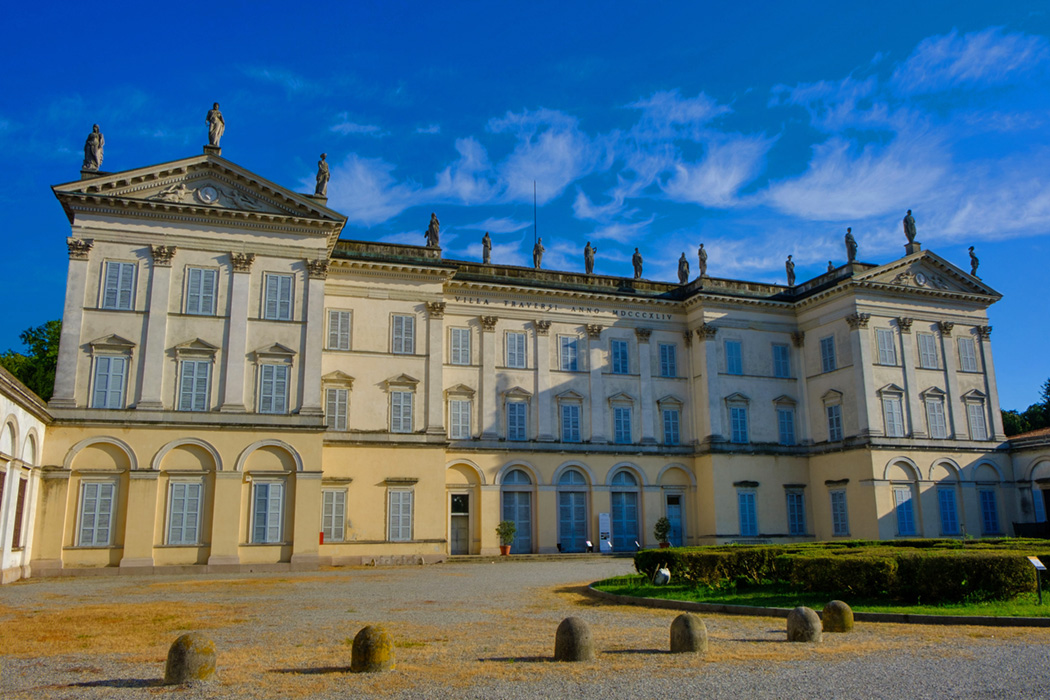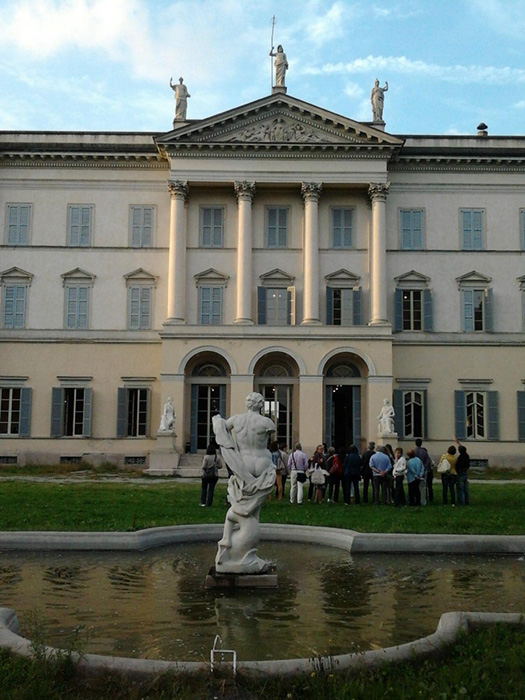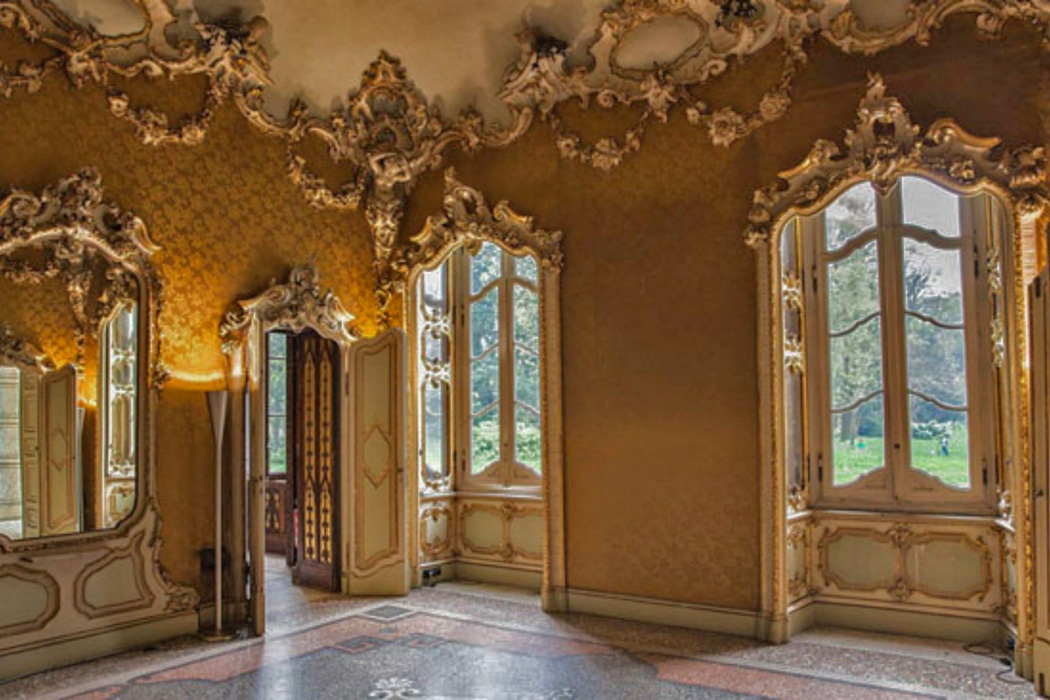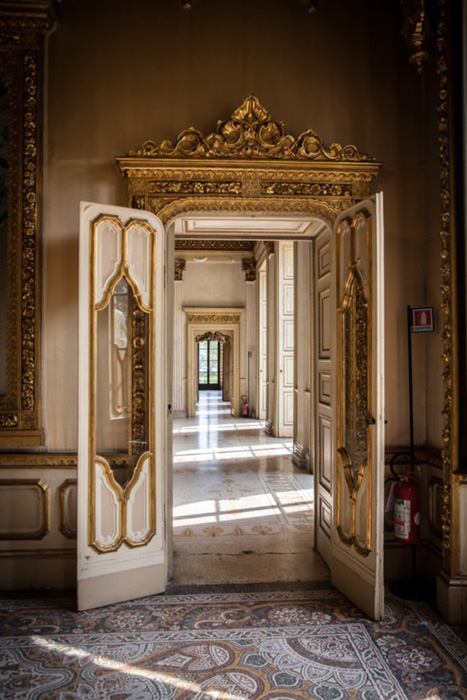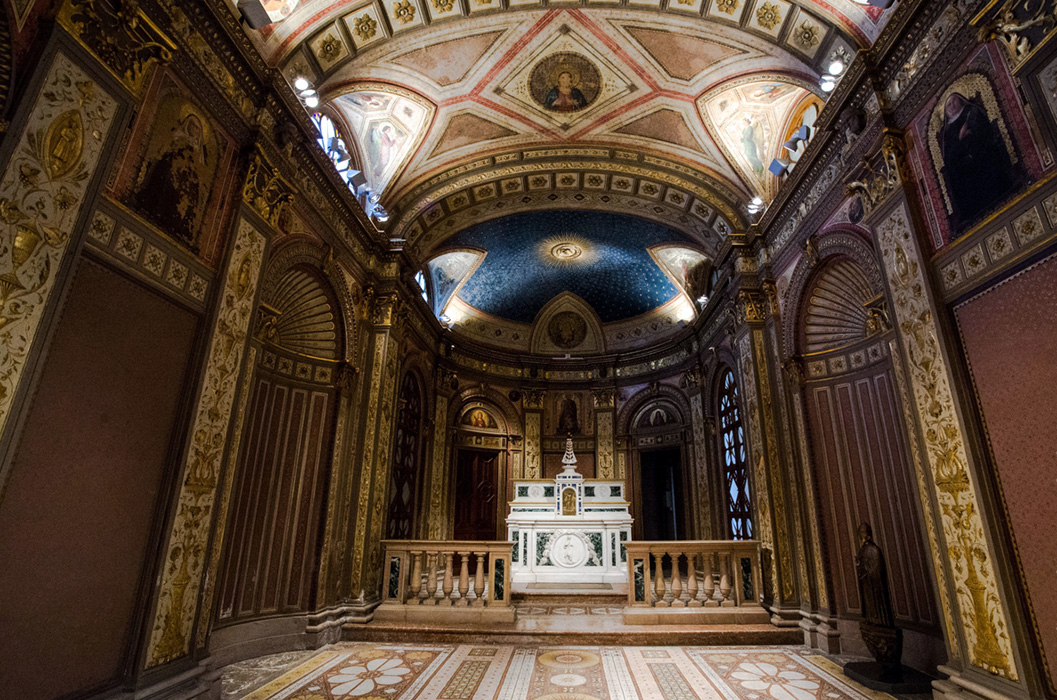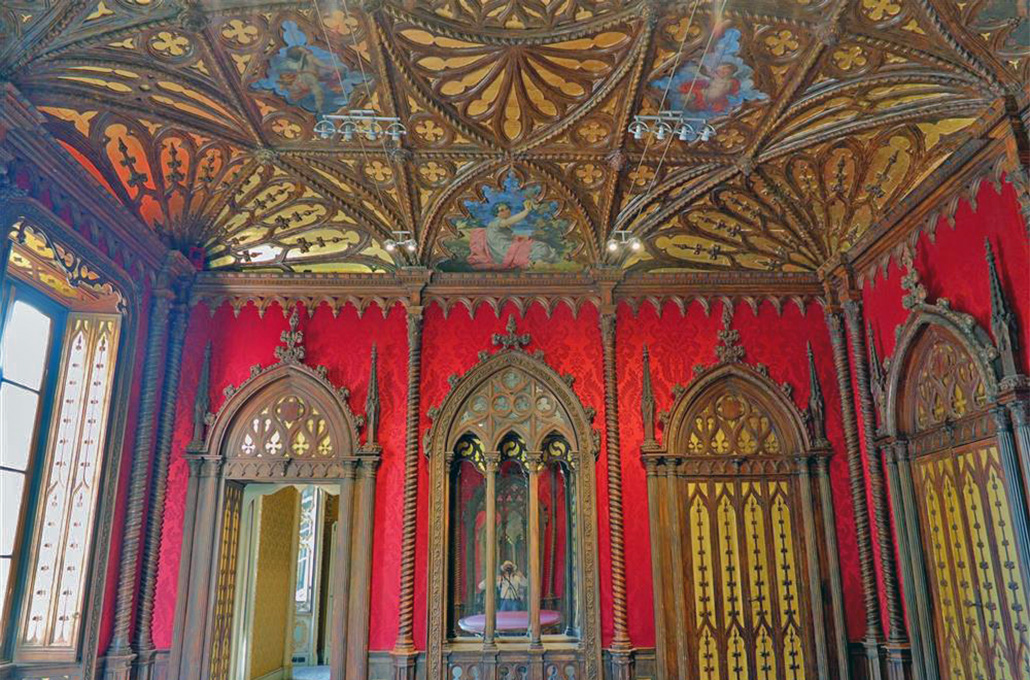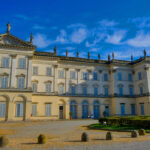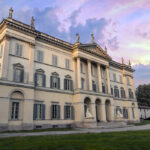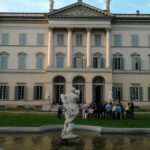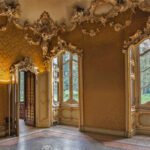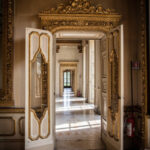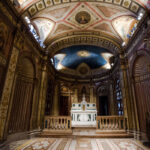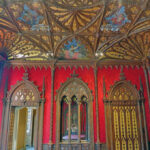Desio – Villa Cusani Tittoni Traversi
The origins of the villa are really ancient, indirectly dating back to 1290 when a Franciscan convent was founded in the Desio area, which was the first built nucleus in the place where the Villa stands today. In 1651, the Marquis Cusani acquired the property and consolidated the real estate that belonged to the convent, creating the basis for the subsequent expansion in the form of a country residence, which was the “first” Villa Tittoni.
The Marquis Cusani wished to build a villa with a garden that could represent the great political and economic importance of the Casato in those years. As was customary in that period among the noble Milanese families, the villa was built as a “Villa di delizia,” a country residence where the nobility retired in the holiday periods, dedicating themselves to leisure, enjoying nature, polite conversation, art, music, poetry, all in the name of refinement and good taste. The architect Giuseppe Piermarini was called upon to build the structure. Cusani hired the most famous architect of the time to show his closeness to the Asburgic Court and created the monumental complex that is still the main structure of the Villa on the “model” of the Villa Reale di Monza. To confirm the majestic richness of the place, it is remembered that in 1785, the King of Naples and his consort visited Desio, as recorded in the chronicles of that time, arriving with a procession composed of seven carriages drawn by six horses and six carriages with four-horse teams.
The English-style garden was designed by Antonio Villoresi with a large hydraulic system that fed a large artificial lake, now buried. Unfortunately, the Marquis Cusani accumulated many debts not only in the construction of the Villa. In 1817, the Villa passed into the hands of its major creditor, the lawyer Giovanni Battista Traversi, a prominent member of the Milanese upper class. Starting in the 1830s, the villa underwent numerous interventions to create an increasingly rich monumental building to showcase the owner’s high social prestige. The Pelagio Palagi, the architect whose style was decidedly classical, but who was able to propose ancient models in a new form, carried out the transformation of the spaces, starting from 1834.
Inside the garden, there was also a neo-Gothic tower built by the same architect, with a museum function, and destined to house the important collection of gravestones, sculptures, and other ancient artifacts, begun by the Cusanis and enriched by the Traversis. The villa reflects perfectly the example of the Milanese upper-class house of the early 19th century, with large spaces for the public juxtaposed with private environments devoid of particular value. As evidence of this, one can easily notice to this day a ground floor for social life, a first floor for the family, and upper floors for servants. The Palagi raised structures surrounding the square in front of the Villa and the rich wrought-iron gate adorned with Carrara marble statues.
After Traversi’s death in 1854, his nephew Giovanni Antona acquired the property, contributing to completing the unfinished works, including the chapel by Angelo Mercanti (around 1860), and doubling the extension of the garden. Upon his death, the villa passed to his minor nephew, Antonio Tittoni, in 1900. Therefore, his father, Tommaso Tittoni, took care of the Villa, commissioning the last structural intervention on the villa, entrusted to the noted architect Luca Beltrami, who completed the monumental staircase that leads to the upper floors. Tommaso Tittoni later became a deputy in Parliament and a Senator of the Kingdom of Italy, a diplomat, Prime Minister in the Giolittian era, and later Foreign Minister. With him, the villa regained a period of new splendor thanks to the numerous diplomatic conferences held here by his new owner; there were multiple visits from the Italian royals and other prominent government officials from foreign countries.
After World War I, the structure experienced a rapid decline. The villa’s furnishings were dispersed, and part of the park and archive artifacts were destroyed, until the intervention of the Municipality of Milan, which purchased the best pieces now on display in some of the city’s museums. In the post-war period, it was donated to the Saveriano Institute for Foreign Missions of Parma, which used the building as a seminary for its students and contributed, as a missionary order, to open a window on the world and the knowledge of African and Asian peoples and cultures. The Municipality of Desio purchased what remained of the villa park in 1952, to convert it into a public park, and in 1975 also the villa, which today houses the municipal library and the Scalvini donation, a permanent exhibition of the works of the Milanese sculptor Giuseppe Scalvini, who wanted to donate them to the City of Desio. Scalvini was already active in the Milanese art scene in the 1930s. After the Second World War, he first joined the artistic movement “15 Borgonovo” (named after a civic art gallery that collected its ferment) and then turned towards a personal path, starting from the intimate and daily themes of the Milanese Existential Realism of the fifties and sixties.

